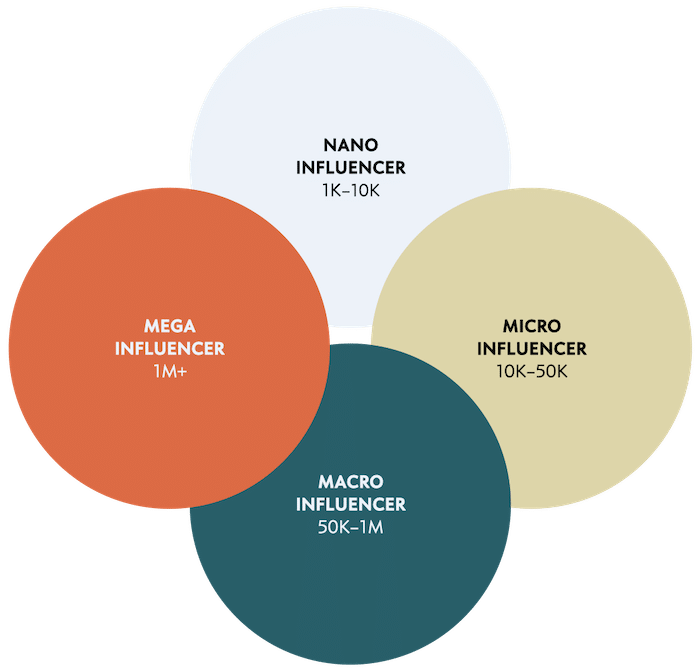Influencer relations is not the same as influencer marketing.
Organisations reaching out to influencers often get it wrong. However, most confusion can be mitigated by simply making the proper distinctions.
To clarify these distinctions, I’ve defined the four types of influencer marketing in this blog post.
Here goes:
Influencer Marketing vs Influencer Relations: What’s the Difference?
Spin Academy | Online PR Courses
Influencer Marketing vs Influencer Relations
There are two main types of influencer marketing and two main types of influencer relations:
Influencer Marketing
Influencer advertising = the influencer will publish the brand’s pre-made content in their channels.
Influencer sponsorship = the influencer will read a script to convey an offering following the brand’s instructions.
Influencer Relations
Influencer collaboration = the influencer showcases the brand’s offering by creating content similar to the influencer’s regular content.
Influencer outreach = the influencer receives invitations, demos, or exclusive material without strings attached.
Advertising and sponsorships are what we typically refer to as influencer marketing. Collaborations and outreach are typically referred to as influencer relations.
Organisations looking to utilise the potential reach of relevant influencers will be wise to pay attention to these distinctions. 1Silfwer, J. (2020, January 15). The Influencers in Public Relations. Doctor Spin | The PR Blog. https://doctorspin.net/influencers-in-public-relations/
Learn more: Influencer Relations Is Not Influencer Marketing
💡 Subscribe and get a free ebook on how to get better PR ideas.
Why These Distinctions Matter: Influencer Trust
Being clear about your intentions is vital because it helps to build trust with the influencer. If you’re not upfront about what you’re looking for, the influencer may feel misled or used, harming your relationship with them and potentially damaging your brand’s reputation.
In addition to being clear about your intentions, it’s also important to be upfront about your expectations. This includes the type of content you want the influencer to create, the messaging you want them to convey, and the timeline for delivering the content.
Setting clear expectations ensures that you and the influencer are on the same page and working towards the same goals — long-term. This helps you maximise your budget and ensure you get the most out of your partnership with influencers.
Being transparent can also help avoid potential misalignments or conflicts with influencers who may not fit your brand.
“Instead of one-off collaborations, in order to create valuable real relations, you have to build long-term relationships. Although not easy, it can be a better solution than the classic approach.”
Source: BrandMentions
Influencers Will Appreciate Your Business Transparency
In today’s digital-first landscape, influencer marketing and influencer relations have emerged as formidable strategies for businesses to disseminate their message to a broader audience.
Brands must navigate the complexities of influencer marketing, which necessitates a precise understanding of one’s objectives and anticipated outcomes when collaborating with these digital mavens.
To optimise the efficacy of influencer marketing campaigns, organisations must foster transparency and establish candid dialogues with their chosen influencers.
By adopting such an approach, businesses can harness the full potential of this influential marketing medium, thereby promoting organisational growth and ensuring a fruitful return on investment.

Thanks for reading. Please consider sharing my public relations blog with other communication and marketing professionals. If you have questions (or want to retain my PR services), please contact me at jerry@spinfactory.com.
PR Resource: Influencers in Public Relations

Spin Academy | Online PR Courses
The Influencers in Public Relations
In PR, influencers are individuals who have managed to grow a substantial audience, which has the potential to affect a specific organisation either positively or negatively.
“Influencers in public relations are emerging stakeholders who generate a state of opinion in the digital community that surpasses traditional public opinion.”
Source: The Role of Prosumers in the Interactive and Digital Processes of Public Relations 2Polo, M. (2020). The Role of Prosumers in the Interactive and Digital Processes of Public Relations. 161 – 174. https://doi.org/10.4018/978 – 1‑7998 – 3119‑8.ch012
Establishing and maintaining good relationships with strategically chosen influencers for the organisation is often critically important.
I recommend using the following tiers and naming conventions for categorising different types of influencers:
Learn more: The Influencers in Public Relations
💡 Subscribe and get a free ebook on how to get better PR ideas.
ANNOTATIONS
| 1 | Silfwer, J. (2020, January 15). The Influencers in Public Relations. Doctor Spin | The PR Blog. https://doctorspin.net/influencers-in-public-relations/ |
|---|---|
| 2 | Polo, M. (2020). The Role of Prosumers in the Interactive and Digital Processes of Public Relations. 161 – 174. https://doi.org/10.4018/978 – 1‑7998 – 3119‑8.ch012 |
























